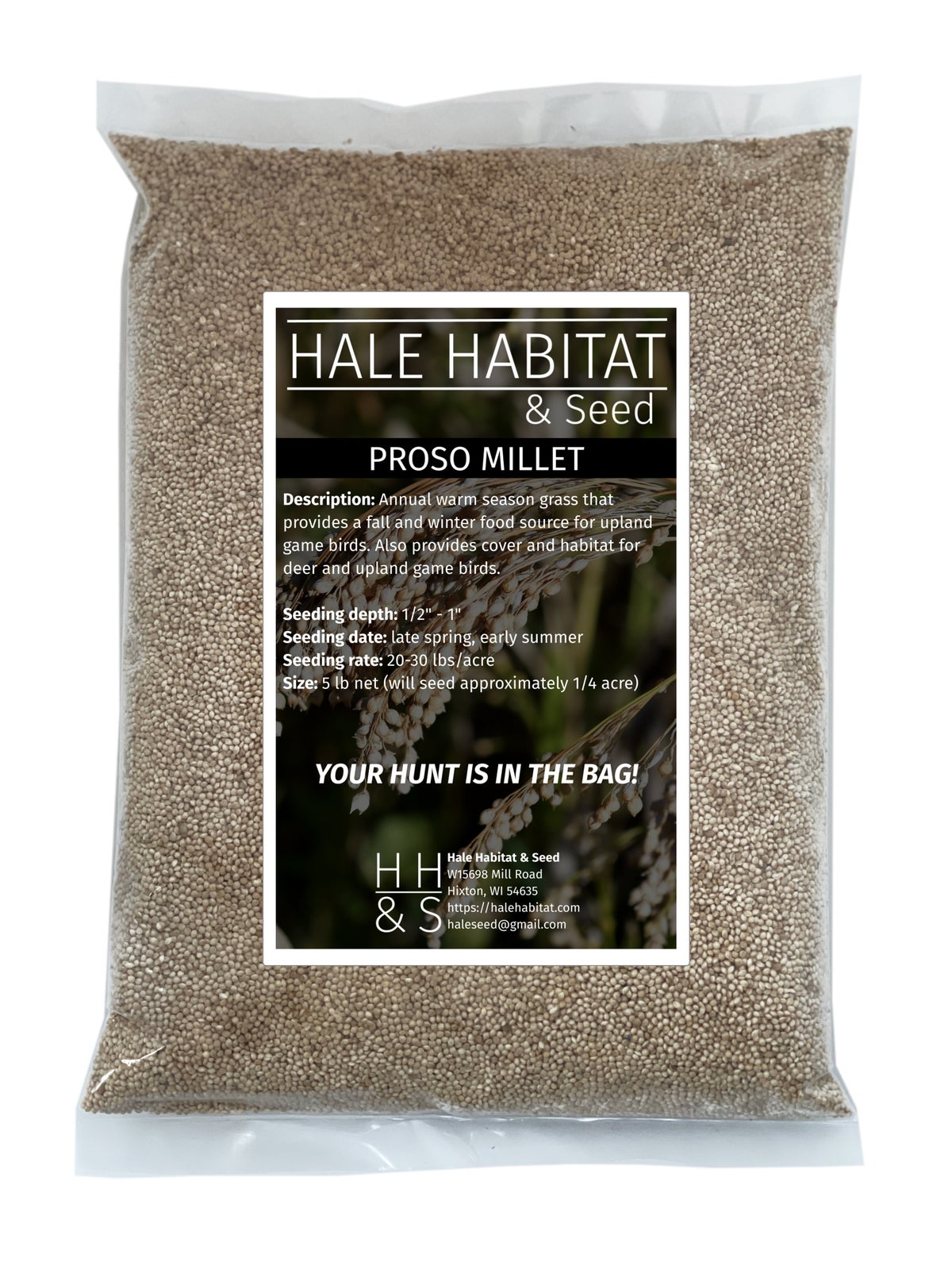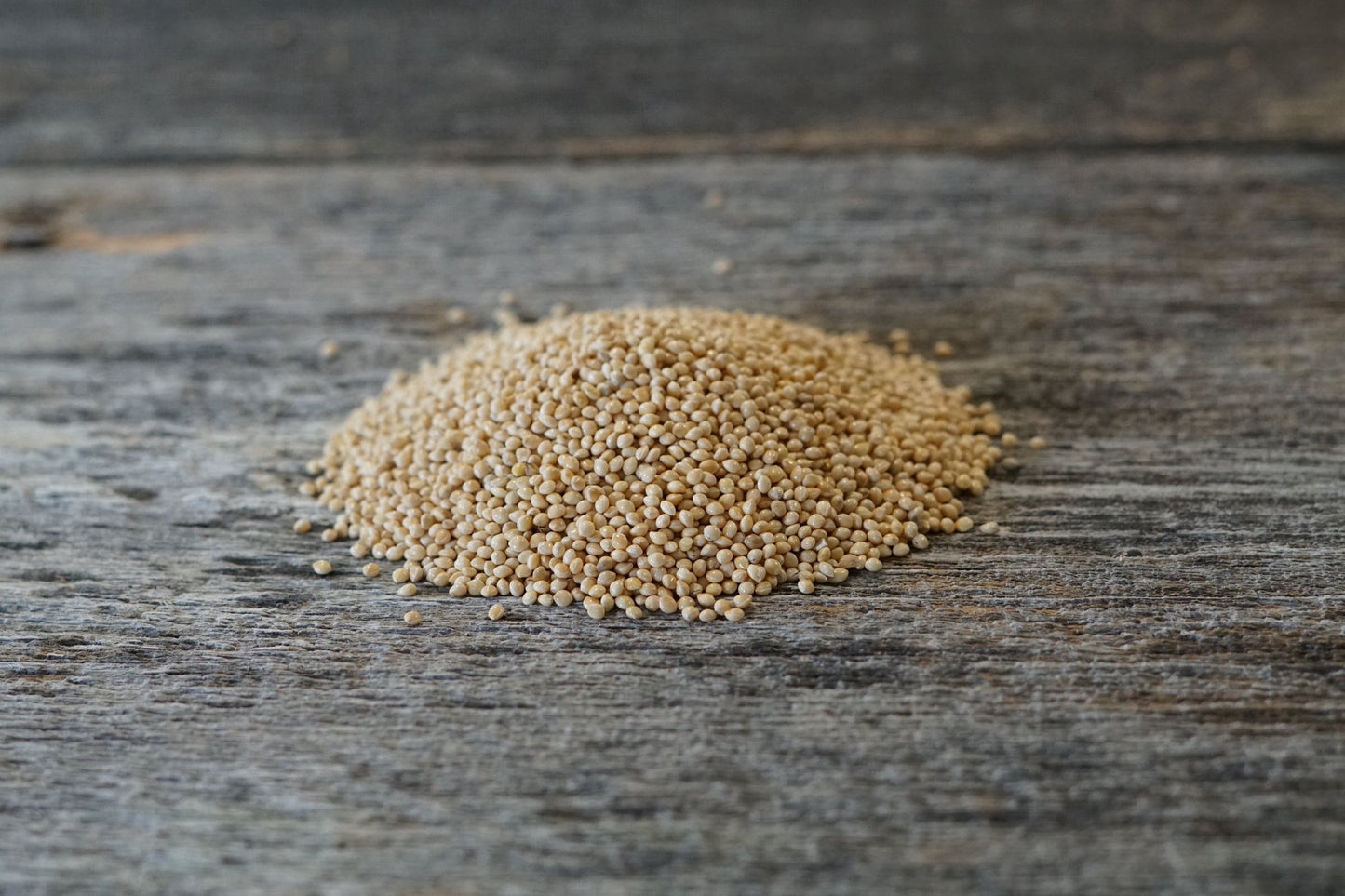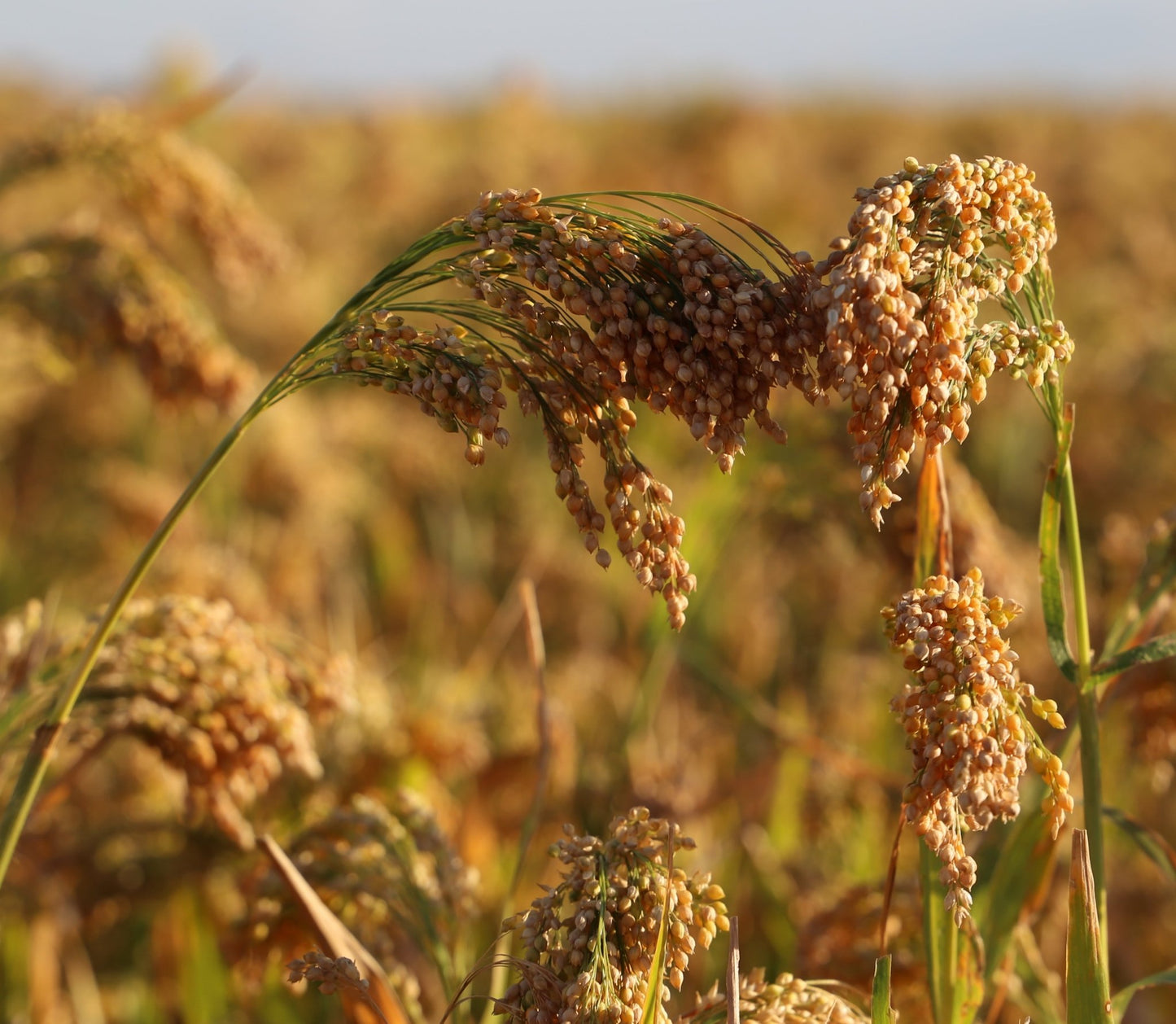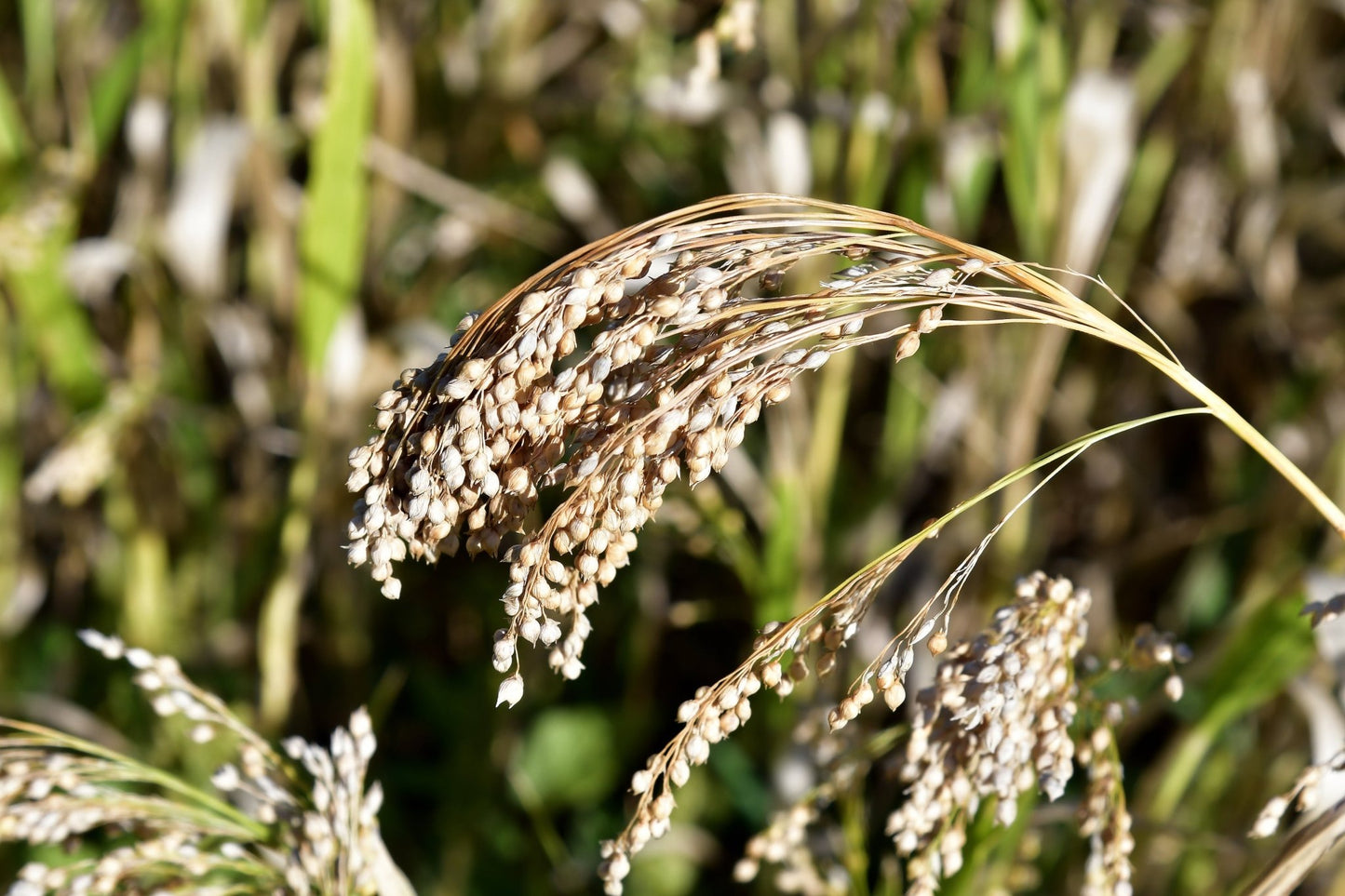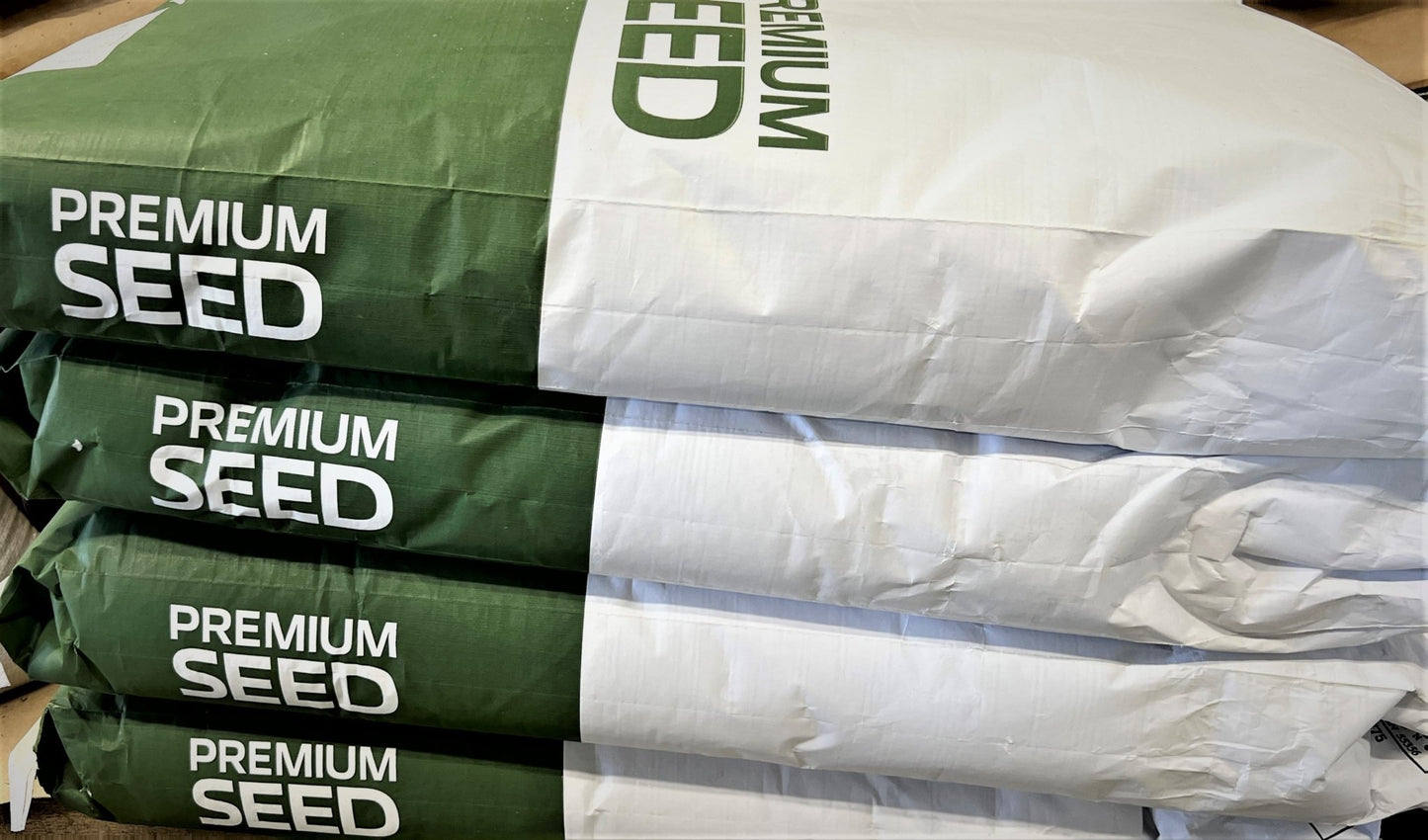Hale Habitat & Seed
Proso Millet
Proso Millet
FREE SHIPPING!
Couldn't load pickup availability
Proso millet (Panicum miliaceum) is a warm-season annual grass widely used for wildlife food plots, forage, and grain production. It is valued by farmers and wildlife enthusiasts for its high seed yield, fast growth, and drought tolerance. The seeds are attractive to birds and small mammals, making it an excellent option for wildlife food sources. Proso millet is also used for soil health due to its ability to establish quickly and produce a significant amount of biomass.
Benefits for Wildlife
✔ High-energy seeds for a variety of wildlife, including quail, pheasants, wild turkeys, and songbirds.
✔ Attracts pollinators such as bees and butterflies.
✔ Drought-tolerant, providing a reliable food source even during dry spells.
✔ Quick-growing and high-seed-producing, making it ideal for wildlife food plots.
✔ Provides cover and nesting habitat for small mammals and birds.
Planting Guidelines for Proso Millet
-
Planting Times:
- Spring to early summer (late May to early June) – After the last frost date, when soil temperatures reach 60°F or higher for optimal germination.
-
Seeding Depth:
- 1 to 1.5 inches deep – Planting too deep may hinder germination.
-
Seeding Rates:
- Drilled: 12–15 lbs per acre for uniform coverage and good establishment.
- Broadcast: 20–25 lbs per acre; lightly incorporate into soil with a cultipacker or harrow for seed-to-soil contact.
-
Days to Maturity:
- 60–90 days from planting to maturity, depending on growing conditions and climate.
-
Height at Maturity:
- Typically reaches 3–4 feet tall, with branching stems and seed heads.
-
Drought Tolerance:
- High – Proso millet is well-suited for dry conditions once established, making it reliable during droughts.
-
Saturated Soil Tolerance:
- Low – Prefers well-drained soils and does not tolerate prolonged waterlogging.
-
Shade Tolerance:
- Low – Prefers full sun for optimal growth and seed production.
Fertilization Guidelines for Proso Millet
-
Soil pH:
- Prefers a slightly acidic to neutral soil pH of 6.0–7.0.
-
Nitrogen (N):
- Moderate nitrogen levels support optimal growth and seed production.
- Apply 30–50 lbs of nitrogen per acre before planting, based on soil test recommendations.
-
Phosphorus (P) & Potassium (K):
- Apply 30–60 lbs of phosphorus and 40–80 lbs of potassium per acre based on soil tests for healthy root and seed development.
- Sunlight, soil fertility, and moisture all influence nutrient needs.
Fertilization Timing:
- Apply all fertilizer at planting for optimal growth and early development.
Herbicide Use for Proso Millet
-
Weed Control:
- Early weed competition can reduce millet yield, so weed control is essential in the early stages.
-
Pre-emergence Herbicides:
- Prowl (Pendimethalin) – Effective at controlling grass and broadleaf weeds before millet emergence.
- Sonalan (Ethafluralin) – Can be used for pre-emergence weed control without harming millet.
-
Post-emergence Herbicides:
- Assure II (Quizalofop-P-ethyl) – Controls grassy weeds without harming proso millet.
- Postemergence herbicides like Basagran (Bentazon) can help control broadleaf weeds but should be used with caution to avoid damage to millet.
Key Considerations:
- Mechanical weed control (e.g., cultivation or mowing) is beneficial in managing weeds during early growth.
- Use herbicides cautiously as proso millet can be sensitive to certain chemicals, particularly those designed for other crops. Always follow label instructions for safe application.
Share
